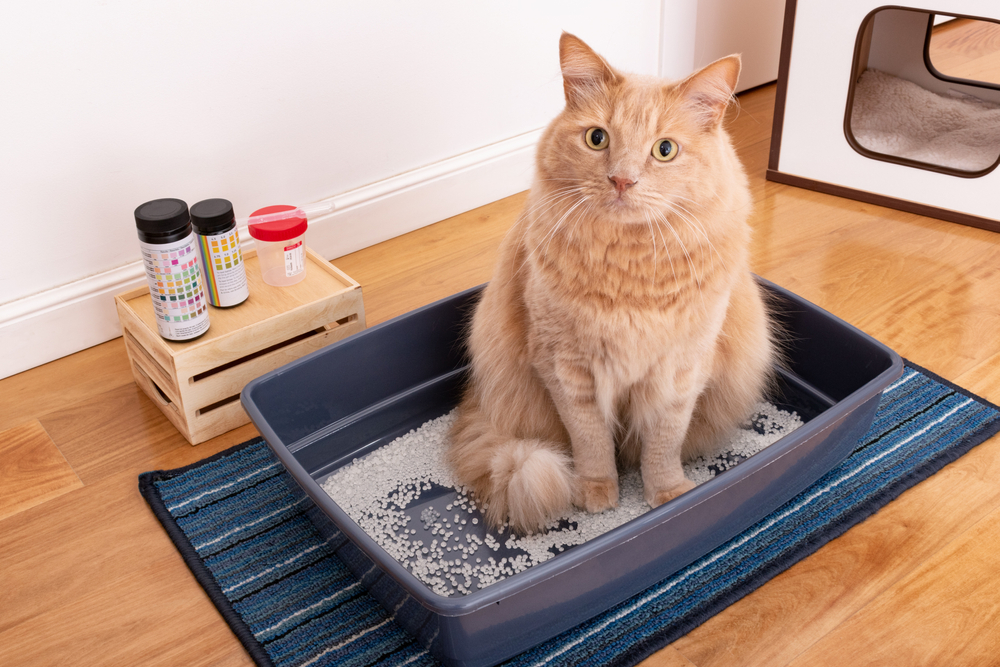
Understanding Urinary Obstruction in Cats
July 1, 2024 6:01 pmCats are known for their independent and sometimes mysterious nature, but when it comes to their health, certain conditions can arise that are both serious and alarming. One such condition is urinary obstruction, which can be life-threatening if not promptly treated. Understanding what urinary obstruction is, its causes, and how to recognize its symptoms is crucial for any cat owner.
What is Urinary Obstruction?
Urinary obstruction, also known as feline lower urinary tract disease (FLUTD), occurs when a cat is unable to urinate normally. This condition is more common in male cats due to their narrower urethras, although female cats can also experience it. The obstruction typically occurs at the narrowest part of the urethra, preventing or severely limiting the flow of urine from the bladder out of the body.
Causes of Feline Urinary Obstruction
Several factors can contribute to the development of urinary obstruction in cats. Understanding these causes can help in both prevention and early detection:
1. Urinary Stones
Mineral crystals can sometimes form in a cat’s urinary tract, leading to the development of stones. These stones can cause a blockage if they become lodged in the urethra, preventing the normal passage of urine.
2. Mucus or Debris
Inflammation within the urinary tract can lead to the production of mucus or the accumulation of debris, which may obstruct the flow of urine.
3. Urinary Tract Infections (UTIs)
Bacterial infections in the urinary tract can cause inflammation and swelling, potentially leading to obstruction.
4. Anatomical Abnormalities
Some cats may have congenital or acquired anatomical abnormalities that predispose them to urinary obstruction.
5. Stress
Stressful situations, such as changes in environment or routine, can contribute to the development of FLUTD in susceptible cats.
Symptoms of Urinary Obstruction
Recognizing the signs of urinary obstruction is crucial for seeking veterinary care promptly:
- Straining to urinate: Your cat may spend a lot of time in the litter box, trying unsuccessfully to urinate.
- Frequent trips to the litter box: Your cat may repeatedly visit the litter box in an attempt to urinate, even if only small amounts come out.
- Painful urination: Your cat may cry out in pain while attempting to urinate.
- Licking the genital area excessively: This may be a sign of discomfort or irritation in the urinary tract.
- Bloody urine: Urine that appears red or pinkish could indicate the presence of blood, which is a concerning sign.
Diagnosis and Treatment
If you suspect that your cat is experiencing urinary obstruction, it is essential to seek veterinary care immediately. Your veterinarian will perform a thorough physical examination and may recommend diagnostic tests such as blood work, urinalysis, and imaging (such as x-rays or ultrasound) to assess the severity of the obstruction and identify any underlying causes.
Treatment for urinary obstruction typically involves:
- Relief of the obstruction: This may require catheterization to manually remove the blockage and allow urine to flow freely.
- Fluid therapy: Intravenous fluids may be administered to help flush out toxins from the bloodstream and rehydrate the cat.
- Medication: Pain relievers and medications to reduce inflammation or manage infection may be prescribed.
- Dietary changes: Switching to a special diet designed to dissolve urinary stones or prevent their formation may be recommended for long-term management.
Preventing Urinary Obstruction
While not all cases of urinary obstruction can be prevented, there are steps you can take to reduce the risk for your cat:
- Provide fresh water: Ensure your cat has access to clean, fresh water at all times to encourage frequent urination and maintain hydration.
- Monitor diet: Feed your cat a balanced diet that promotes urinary health, which may include specialized diets recommended by your veterinarian.
- Reduce stress: Minimize stressors in your cat’s environment and provide a stable routine.
- Regular veterinary check-ups: Schedule routine veterinary visits to monitor your cat’s overall health and catch any potential issues early.
Conclusion
Understanding urinary obstruction in cats is essential for recognizing the signs and symptoms early, ensuring prompt veterinary care, and taking steps to prevent future occurrences. By being proactive about your cat’s urinary health and seeking veterinary attention at the first sign of trouble, you can help ensure a happy and healthy life for your feline companion.
Need a Cat Veterinarian in Alexandria, VA?
Welcome to Kingstowne Cat Clinic! Kingstowne Cat Clinic is a locally owned, community focused cat clinic. We specialize in giving your feline friend the care they need. We offer wellness exams, surgery, dentistry, vaccinations, and acupuncture. We also provide sedated grooming and at home euthanasia. Kingstowne Cat Clinic is dedicated to providing quality medical and surgical care for all cats. Contact us today for an appointment!
Categorised in: Cat Health, Cat Veterinarian
This post was written by admin
